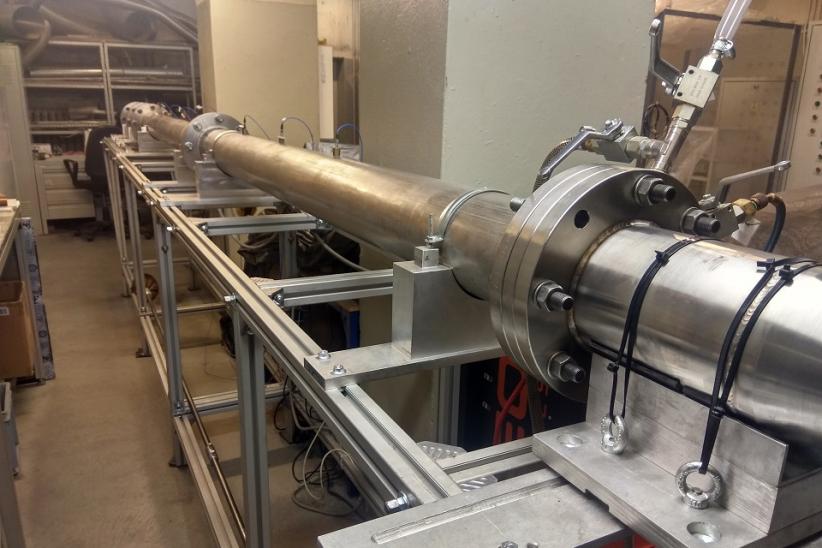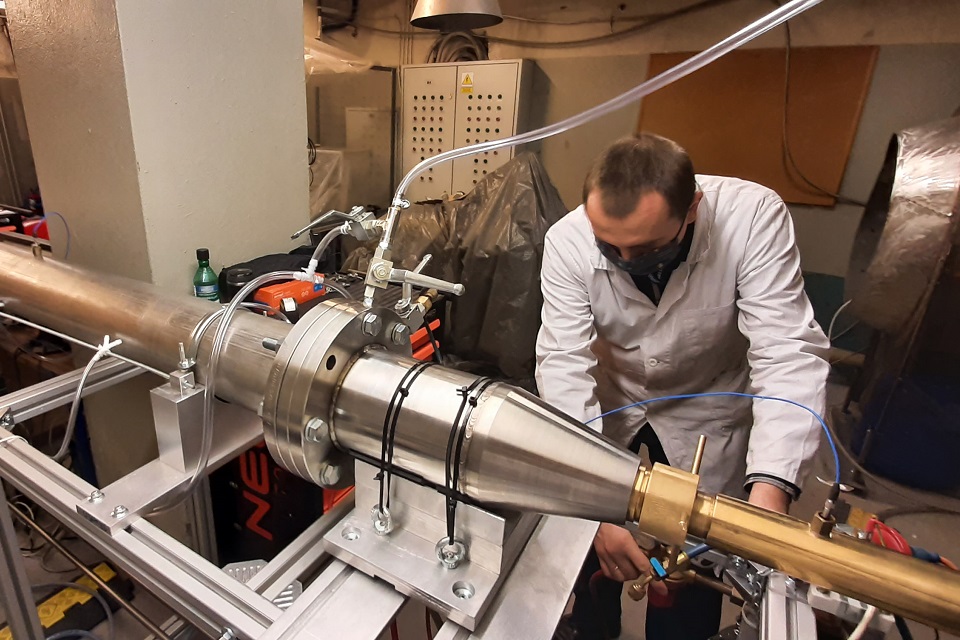Pioneering research on biogases
A research team from the Warsaw University of Technology is devising a method of modeling the detonation cell size in a biogas-oxygen mixture utilizing machine learning. The results of their work are novel in the field of research on detonation.
“Biogas is considered to be an eco-friendly alternative to fossil fuels. Additionally, detonation combustion will translate into an increase in the thermal efficiency of circulation, which in turn will later translate into a decrease in fuel consumption itself,” says Jan Kindracki, PhD, DSc, Associate Professor at the Faculty of Power and Aeronautical Engineering at WUT. “The knowledge gained during our research may be used in the work on designing combustion chambers utilizing the technology of spinning detonation for biogas as a fuel and add to the greater safety of use,” he adds.
To conduct research during the first stage, the scientists had to design and construct a detonation pipe appropriate for the purpose.
“We constructed a chamber based on our assumptions, which were based on the knowledge about the detonation cell width in a methane-oxygen mixture,” explains Professor Kindracki, who successfully constructed prototypical combustion chambers used in aviation in rocket or turbine engines. “A detonation pipe is around six metres long: the initiating part, also called propelling part, is about 1 m long, while the research part is about 4.5 m long,” he adds.
An elastic plate covered with soot, on which the passing detonation wave leaves a trace depicting detonation cells, was placed inside the detonation pipe. The next step is the digitalization of the image to measure the width of the diamond-shaped detonation cell and to make statistical calculations. This is all done to obtain the information about the cell width under specific conditions (the initial pressure of the mixture, coefficient of the mixture stoichiometry, and type of biogas, i.e. the volume ratio of two main components of the biogas, i.e. methane and carbon dioxide).
“Currently, we are focused on the construction of mathematical models utilizing machine learning methods, which will allow us to predict the width of cells for different, untested biogas compositions, among other things,” says Professor Kindracki. “However, to reach this stage, we had to acquire a database to make the calculating algorithm work properly and predict the results. For this purpose, we carried out over 600 experiments in the detonation pipe, with an average time for a single experiment of about 60 minutes. This is new in the research on biogas detonation. So far, physical formulas which were useful for the tested parameters have been used in creating models. Our approach provides an opportunity to determine the tested parameters outside that range,” he sums up.
The first research results obtained by the team under the supervision of Professor Kindracki have been published in the Energies journal.
-
Project „Experimental research and modeling the size of biogas – air mixtures detonation cell using machine learning method” is funded by a research grant from the “Excellence Initiative – Research University” programme implemented at the Warsaw University of Technology.
Research team:
Jan Kindracki, PhD, DSc, Associate Professor; Stanisław Siatkowski, MSc; Krzysztof Wacko, MSc




